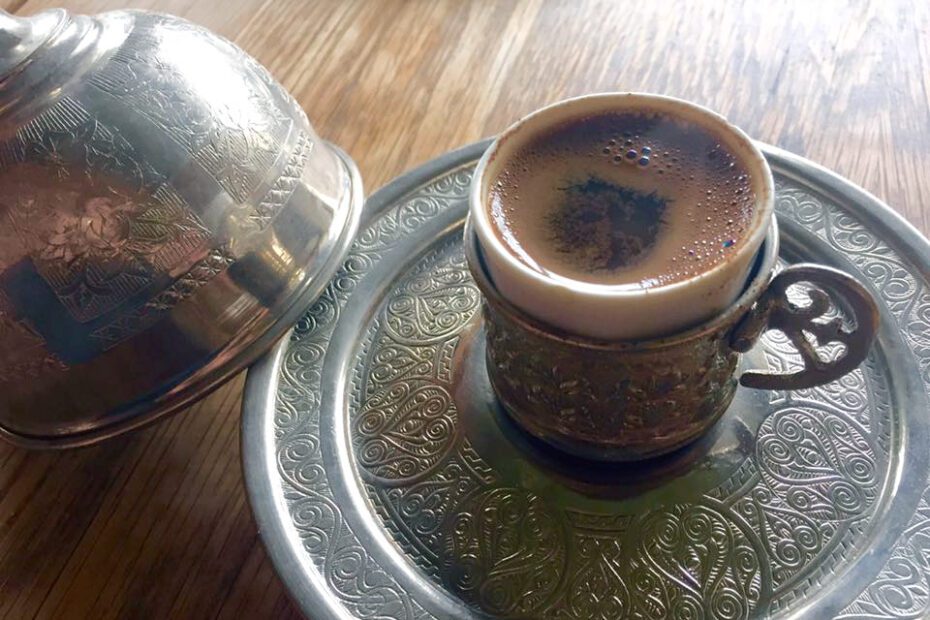Greek coffee, Turkish coffee, either way, it’s delicious
My Greek ancestors were in Ethiopia, the home of coffee, at least as far back as the 4th or 5th century BC. They took with them the Greek Orthodox Church, which has been in Ethiopia since at least the 5th century BC.
14th Century Ottoman Empire
Yet somehow, it wasn’t until the 14th century Ottoman Empire that coffee culture developed in the formerly Greek territory now known as Turkey. Once it got established though, Greek coffee culture took hold with fervor both in the former Anatolia and also in mainland Greece.
Greeks have taken coffee into the heart of Greek culture and claimed it as our own. Social gatherings, whether at home or in one of the local coffee shops, require a cup of Greek coffee at the end, paired with a small dessert.
Special grinder and coffee pot

Greek coffee, aka Turkish coffee, is made in a special long-handled tapered pot known as a brika, usually made of brass or copper. A small amount of coffee is served in a demitasse cup similar to an espresso cup, always with a glass of cold water.
Often present with your cup of coffee are sweet treats like Turkish delight or perhaps diples, a crisp deep-fried dough covered in syrup.
The traditional Greek coffee recipe requires a very fine consistency to the coffee grounds, known as “Turkish Grind”. This is done in a special cylindrical grinder, usually an object of beauty in itself that is often ornately detailed. It’s possible a modern grinder could still produce the ultra fine grind of coffee beans required, but the authentic grinder is guaranteed to serve. If you don’t have one and can’t find Turkish grind, you might try regrinding some espresso coffee until it is powder.
Neither shaken, nor stirred
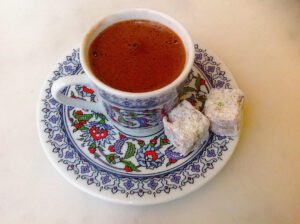
If you are given a spoon with your coffee, it is merely there to tease you. If Greek coffee is sweetened, a teaspoon of sugar or two per cup is added to the brika and boiled into the drink. If you ask for a spoon you may be given one, but be prepared to be lectured if you use it. The goal of the Greek coffee maker is to prepare your cup so that the top of the coffee is rich, with thick foam, and the bottom of the cup when finished has a layer of coffee grounds.
If you are at a Greek cafe (kafenio) in Greece they may make it the traditional Middle Eastern way from Yemen, over a bed of hot sand. This is a nicely showy method that adds to the atmosphere of the cafe, while also allowing subtly different ways of finishing the coffee. Controlling the high heat of the beverage while it is brewing helps manage the end result.
Three ways to prepare it, or perhaps 35
There are three main ways of preparing Greek coffee, bitter (shetos), medium (metrios), and sweet (glikos). But within that, however, and with the subtle control allowed by the hot sand, one can produce many variations on these themes. The result will always be a very strong brew of coffee. Fortunately, Greek coffee is served in small cups and a little bit goes a long way. It generally takes only one good Greek coffee to consume your required daily value of caffeine. 😉
According to Joyce M. Stubbs in the Home Book of Greek Cookery, there may be 35 ways of preparing Greek coffee. These are based on the subtleties of sugar, and foam, whether it is stirred or not, and how many times it is removed from the fire, or how long it is kept upon it. There are at least enough variations possible to rival the best Frasier and Niles scenes at Cafe Nervosa.
A fortune in your coffee
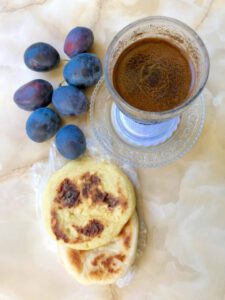
A popular Greek tradition is to turn the finished cup upside down, or on its side to “read” the grounds, a process called tasseography. This is a common practice throughout the region, a harmless bit of social coffee culture that is mostly about entertainment and an excuse for storytelling.
To make Greek coffee, begin with the best strong coffee beans, ground to a fine powder, even finer than for espresso.
Start by boiling the water in your brika. Add a teaspoon of coffee per cup to the hot water. If you are making it sweet add your sugar at the same time, one or two spoons depending on taste.
Bring the coffee to a boil and remove it from the flame to stir it just once. Then return to the flame (or sand) and boil once more. Handling the pot gently so as not to disturb the coffee, pour it carefully into the small cups and serve immediately with a glass of cold water and a sweet pastry, perhaps some baklava or kourambiedes.
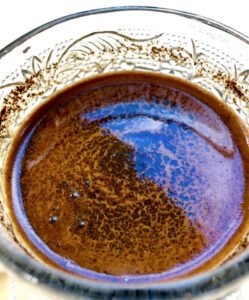
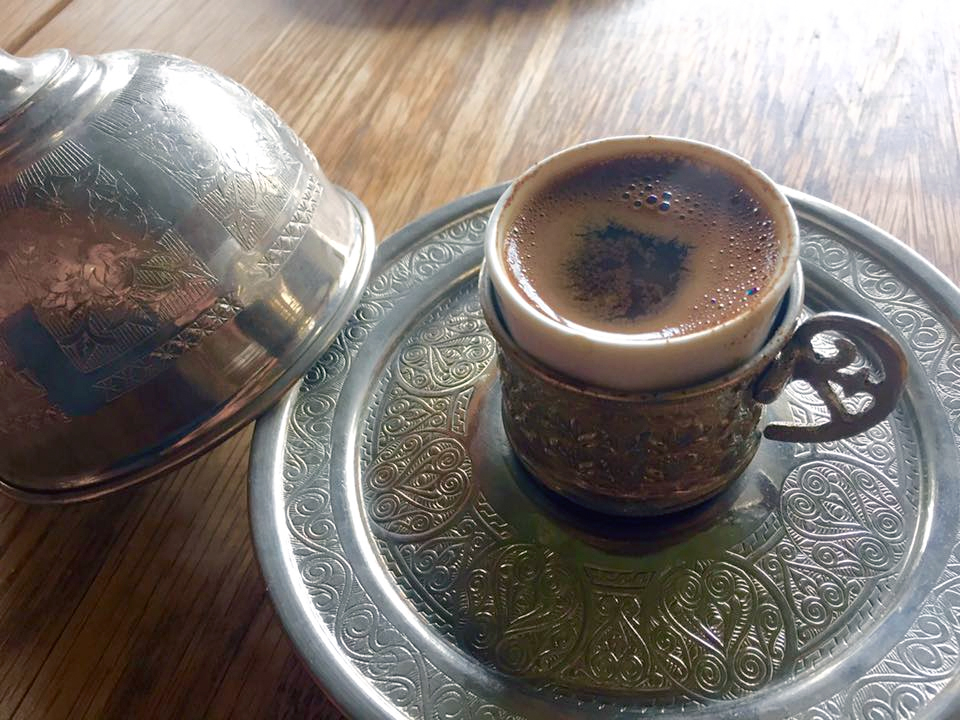
Equipment
- 1 Brika (aka Ibrik, a special coffee pot)
- 1 Grinder (Greek/Turkish coffee requires a very special fine grind, often not commercially available and uses a special grinder)
Ingredients
- 2 cups water
- 2 tsp coffee ultra finely ground
- 2 tsp sugar if a sweet coffee is desired
Instructions
- Fill the brika with enough water for 2 cups and bring to a boil
- Remove the pot from the heat
- Add the coffee and sugar
- Stir to dissolve the sugar and infuse the coffee
- Put the brika back on the heat
- Stir until the coffee begins to foam
- Remove from the heat
- Some will repeat the last three steps many times in achieving their perfect brew
- Spoon a bit of foam into the cup and pour the coffee gently into the cup
Notes

